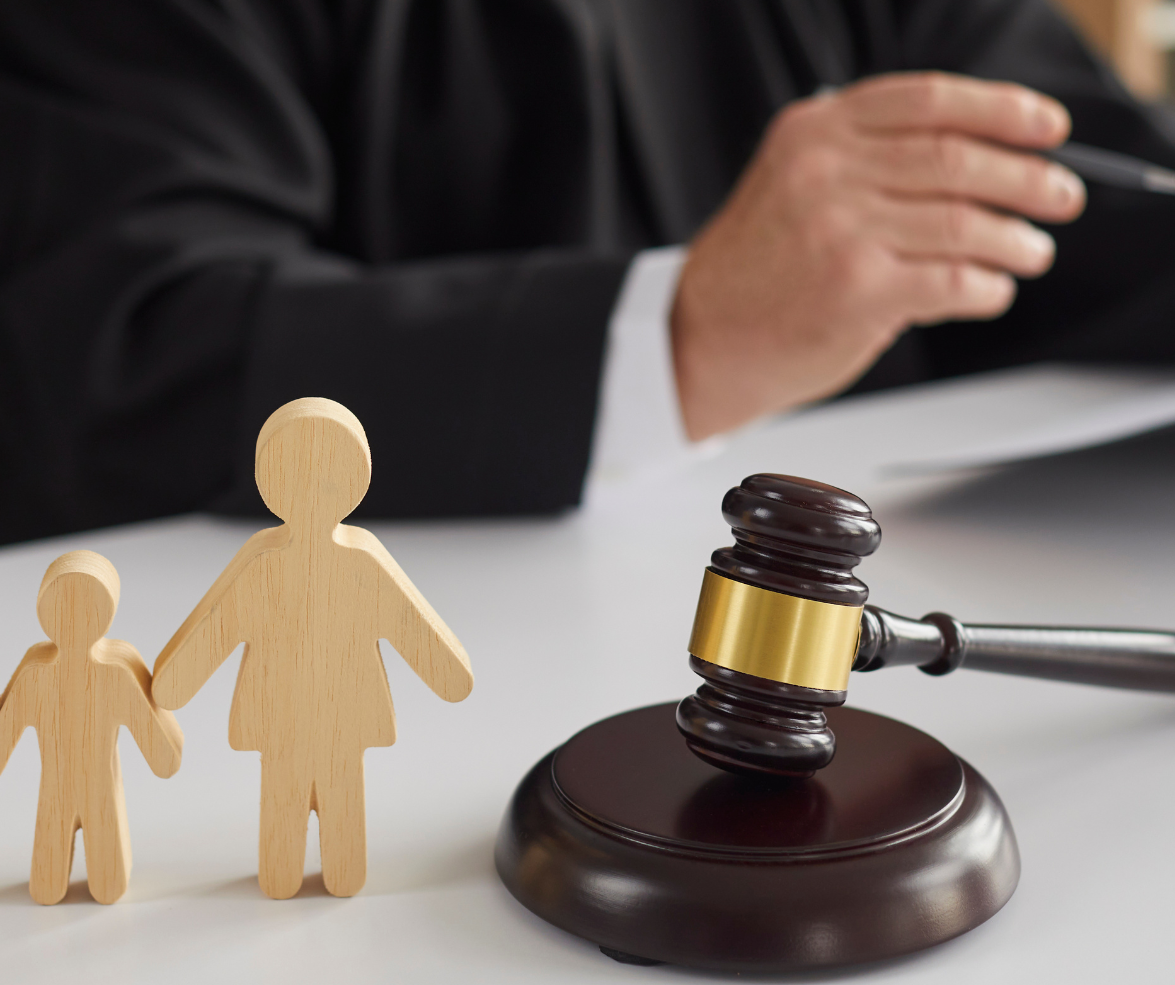5 Signs of Domestic Violence In A Home And When To Seek Legal Help
Domestic violence (DV) is a pattern of abusive behavior that one person uses to gain or maintain power and control over another in a close relationship. Abuse can take many forms: physical, emotional, verbal, financial, or psychological, and often escalates over time. While anyone can experience domestic violence, women are most commonly affected, and it can impact people of any age, gender, or background.
The
impact of domestic violence extends beyond the individuals involved. It can affect children, families, and entire communities. Recognizing the early warning signs is often the first step toward protecting yourself or someone you care about.
Causes of Domestic Violence
Domestic violence doesn't have a single cause. It often stems from a complex combination of individual, relational, and societal factors. Domestic violence is about one person exerting power and control over another. This dynamic can develop through a variety of influences that increase the risk of abusive behavior.
While understanding the root causes can help identify risk factors, it's important to be clear: none of these causes excuse or justify abuse.
Here are some of the common contributors:
- Power and Control
Most domestic violence begins when one partner seeks to dominate the other.
- Learned Behavior
Some people grow up in households where violence is normalized.
- Cultural and Societal Norms
Cultural attitudes that promote male dominance, discourage emotional expression, or minimize women's rights can create environments where abuse is overlooked or accepted.
- Mental Health Issues
While mental illness does not cause abuse, certain untreated mental health conditions, such as extreme anger issues or personality disorders can increase the risk of harmful behavior.
- Substance Abuse
Alcohol or drug use can lower inhibitions and increase aggression, leading to a higher risk of violence in the home.
Understanding the Cycle of Domestic Violence
Domestic violence often follows a repeating cycle that can make it difficult for victims to leave. This cycle isn't always obvious at first, but over time, it becomes more predictable and emotionally exhausting.
Here are the four common stages of the domestic violence cycle:
1. Tension Building
During this stage, stress and strain begin to grow in the relationship. The abuser may become moody, irritable, or critical. Victims often feel like they're walking on eggshells, trying to keep the peace and avoid triggering conflict.
2. Incident of Abuse
This is the stage where the abuse occurs. It can be physical, emotional, verbal, sexual, or financial. The abuser uses intimidation, threats, or violence to exert control.
3. Reconciliation (The “Honeymoon Phase”)
After the abuse, the abuser may apologize, show affection, or promise to change. They might blame stress, alcohol, or the victim for what happened. This phase can be confusing and emotionally manipulative, offering a temporary sense of hope or love.
4. Calm (False Sense of Normalcy)
Things may return to “normal” for a while. There's no immediate tension, and the relationship may seem stable. However, the underlying issues remain unresolved, and the cycle eventually begins again.
Many victims stay in abusive relationships because of this cycle. The calm and reconciliation stages can create false hope, especially when love, fear, financial dependence, or children are involved. Over time, the cycle can become more intense and dangerous.
5 Warning Signs of Domestic Violence in a Home
Abuse isn't always easy to recognize. It doesn't always leave bruises, and it doesn't happen all at once. In many cases, it starts subtly with behaviors that may even seem protective or caring at first, and gradually becomes more controlling or harmful over time.
Here are five common warning signs to watch for in a home:
1. Controlling behavior and isolation
Controlling behavior is often one of the first signs of abuse. It may include:
- Monitor phone calls, messages, or social media
- Decide where their partner can go and who they can see
- Demand constant updates on their partner's whereabouts
- Discourage or prevent time with friends and family
Over time, these actions isolate the victim, making it harder to maintain support systems or ask for help.
2. Physical harm or threats of violence
Abusers may use physical violence or threats to gain control. They often:
- Push, hit, slap, or restrain during arguments
- Break or throw objects to intimidate
- Threaten to harm the victim, their children, or their pets
- Use aggressive body language or block exits
- Even when no physical contact occurs, threats create fear and often precede further abuse.
3. Emotional abuse and manipulation
Emotional abuse damages a person's self-worth and mental well-being. Abusers frequently:
- Gaslight their partner by denying the truth or twisting facts
- Use insults, name-calling, or public humiliation
- Shift blame to the victim to avoid accountability
- Dismiss their partner's thoughts and feelings
These tactics cause confusion and emotional exhaustion, making it harder for victims to trust themselves.
4. Financial control or dependence
Abusers may use money as a tool to trap their partner in the relationship. They might:
- Restrict access to bank accounts or financial records
- Prevent their partner from working or sabotage their job
- Control all spending decisions without input
- Give an allowance or require permission for purchases
Financial abuse creates dependence, leaving victims feeling unable to leave or support themselves.
5. Threats related to children or immigration status
Abusers may use your role as a parent or your immigration status as tools of control. Common threats include:
- “I'll take the kids away from you.”
- “You'll never see them again.”
- “I'll call immigration if you try to leave.”
These threats are meant to instill fear and keep you from seeking help, especially if you believe legal systems won't protect you.
Safety Planning and Resolving Domestic Violence at Home
If you're experiencing domestic violence, your safety is the priority. While every situation is different, taking careful and informed steps can help protect you and your loved ones.
Start with a Safety Plan
- Identify a safe place to go in an emergency (a friend's home, shelter, or public place).
- Pack a “go bag” with essentials: ID, cash, keys, medications, and important documents.
- Share your plan with someone you trust, and keep emergency contacts written down.
- Use a separate phone or device to research or privately reach out for help.
Avoid Confrontation When Planning to Leave
- Don't alert the abuser about your plan. Leaving can be the most dangerous time in an abusive relationship.
- Try to leave when they are not present, and have transportation ready if possible.
Know Your Options
- In some early-stage or less severe situations, counseling or professional intervention might help, provided it's safe and consensual.
- Most cases, especially when there is ongoing abuse, require outside support and legal protection.
Reach Out for Help
- Contact a domestic violence hotline or shelter for confidential guidance.
- Talk to a family law attorney about protective orders, custody options, or emergency support.
Know Your Legal Rights and When It's Time to Get Help
California law provides several legal protections for those experiencing domestic violence. You have the right to feel safe in your home and protect your children from harm.
Here are a few key legal protections available:
- Domestic Violence Restraining Orders (DVRO): A court order that legally prevents an abuser from contacting, approaching, or harming you.
- Emergency Custody Orders: Temporary orders to protect children from an abusive parent while longer-term custody decisions are made.
- Supervised Visitation: The court may require that a parent's time with a child be supervised to ensure the child's safety.
- Divorce or Custody Modifications: If violence is involved, the court may adjust custody or support arrangements to protect the victim and children.
Under the domestic violence act, California courts take abuse seriously and offer tools to help victims protect themselves and their families. You don't have to go through this alone; legal support is available.
Domestic Violence Resources in California
Below is a list of trusted resources for immediate help, shelter, legal support, and counseling:
Hotlines
- National Domestic Violence Hotline: 1-800-799-SAFE (7233) – 24/7, confidential
- California Partnership to End Domestic Violence: 1-800-524-4765
Local Shelters & Support Services (SoCal)
Legal Aid & Advocacy
- Legal Aid Foundation of Los Angeles (LAFLA)
- Domestic Violence Legal Services Project (California)
These resources are free or low-cost, confidential, and accessible in multiple languages.
Frequently Asked Questions About Domestic Abuse
1. What is the definition of domestic abuse?
Domestic abuse is a pattern of behavior used by one person to gain or maintain power and control over another in a close or intimate relationship. It can include physical violence, emotional manipulation, verbal threats, financial control, or sexual coercion.
2. What is classified as domestic violence?
Domestic violence includes any abusive act between people in a close relationship, such as spouses, partners, parents, or co-parents that involves harm or the threat of harm. It's classified as domestic violence when the abuse involves:
Physical injury or threats
Emotional or psychological harm
Sexual abuse or coercion
Financial control or deprivation
In California, the legal system recognizes domestic violence as both a civil and criminal matter, with protections under the Domestic Violence Prevention Act.
3. What are the four main types of domestic abuse?
The four main types of domestic abuse are:
- Physical Abuse: Hitting, slapping, pushing, or any form of physical harm or intimidation.
- Emotional or Psychological Abuse: Gaslighting, insults, threats, manipulation, or controlling behavior that affects mental health.
- Sexual Abuse: Any non-consensual sexual contact or coercion, even within a relationship.
- Financial Abuse: Controlling access to money, restricting the ability to work, or using finances to manipulate or trap the victim.
Many abusive relationships involve more than one type of abuse, often overlapping to maintain control over the victim.
When to Talk to a Lawyer
If any of the signs in this guide sound familiar, it may be time to seek legal protection. You don't have to wait until the situation worsens; early action can help protect your safety and your children's well-being.
Harris & Mckeown Law Firm can:
- File a restraining order to help keep your abuser away
- Help you obtain emergency custody or modify existing orders
- Guide you through the divorce or separation process with your safety in mind
Our firm offers confidential consultations and has extensive experience helping clients in difficult and sensitive domestic violence cases.
Reach out today because your safety matters.





